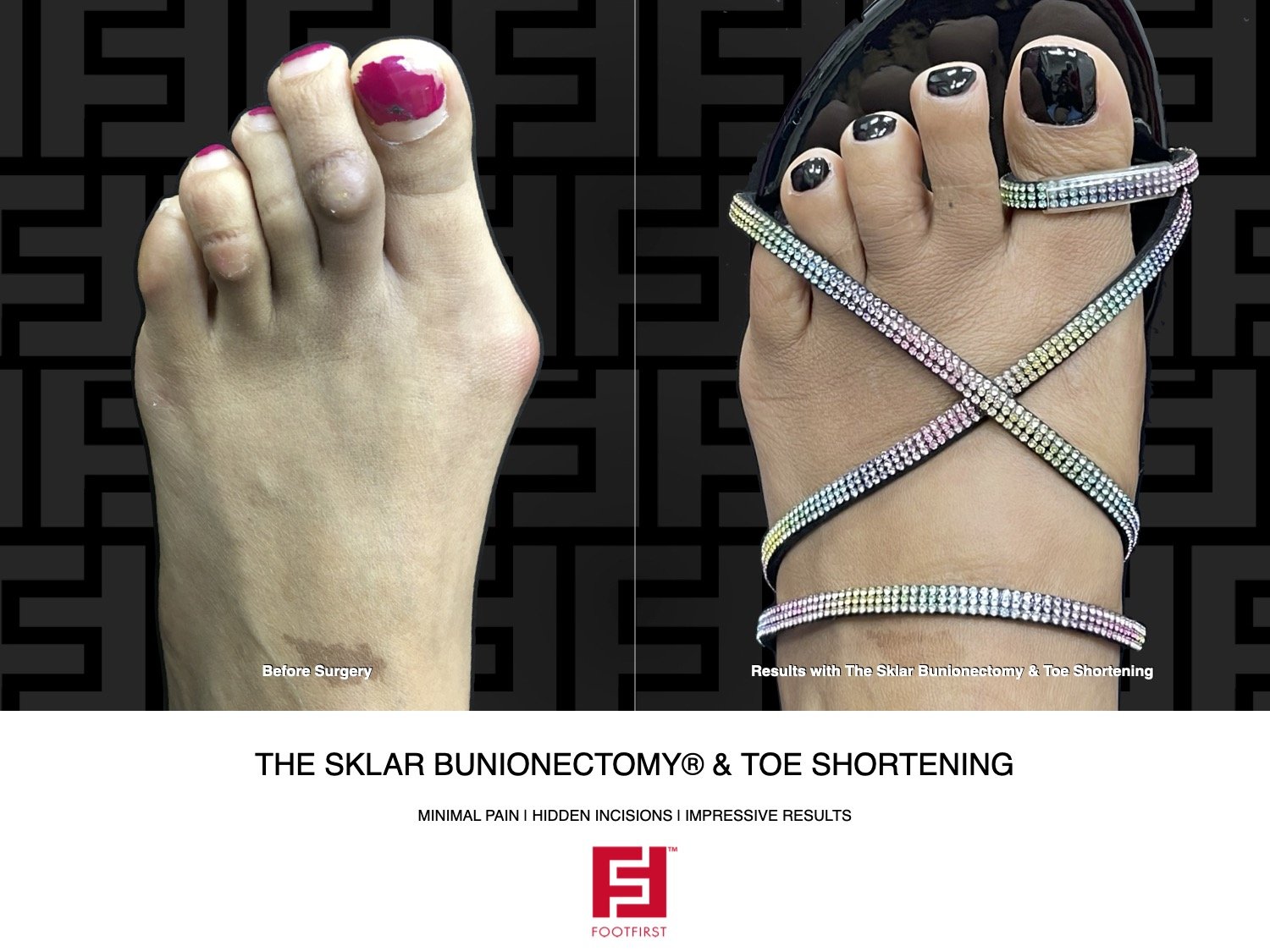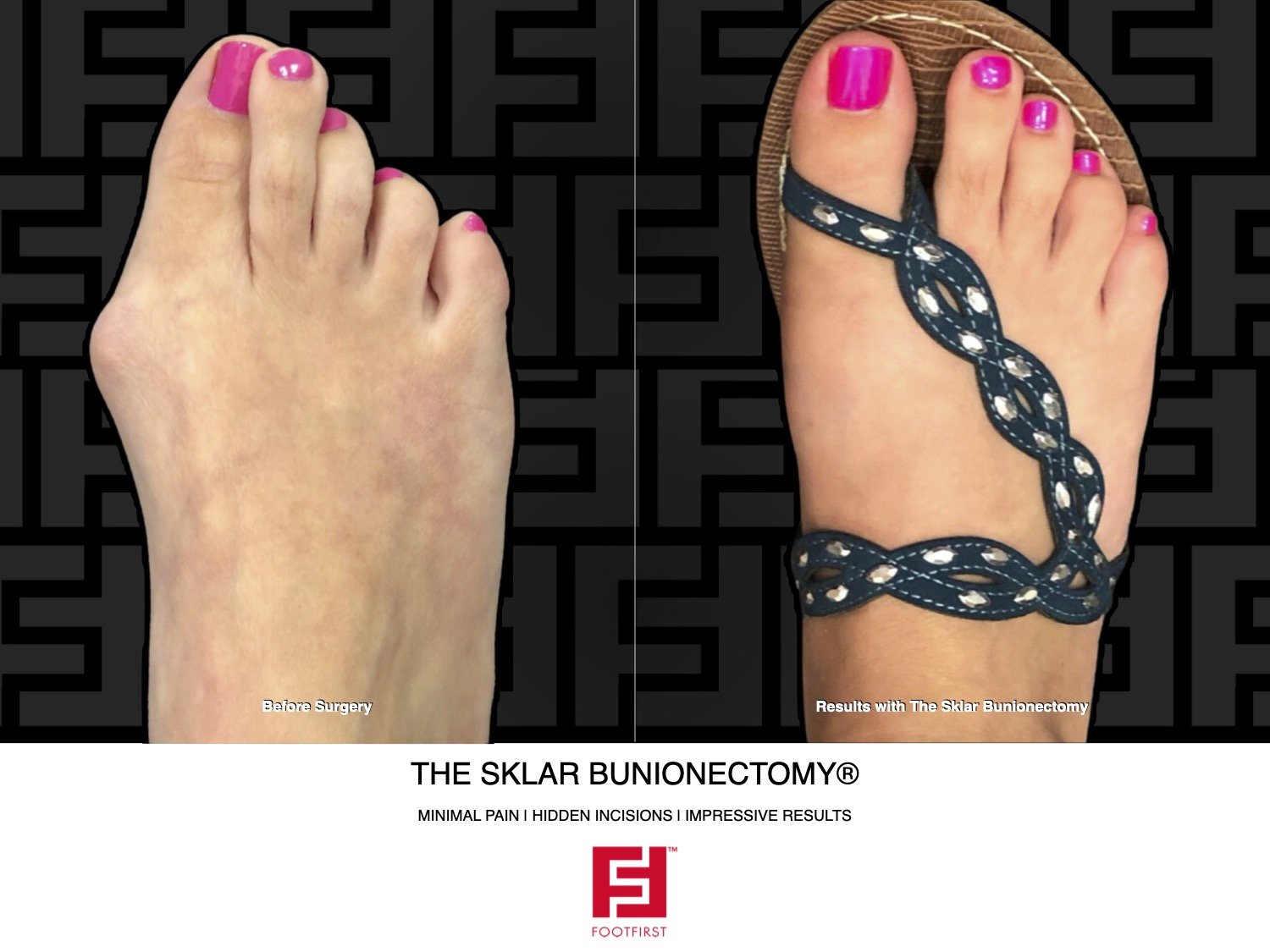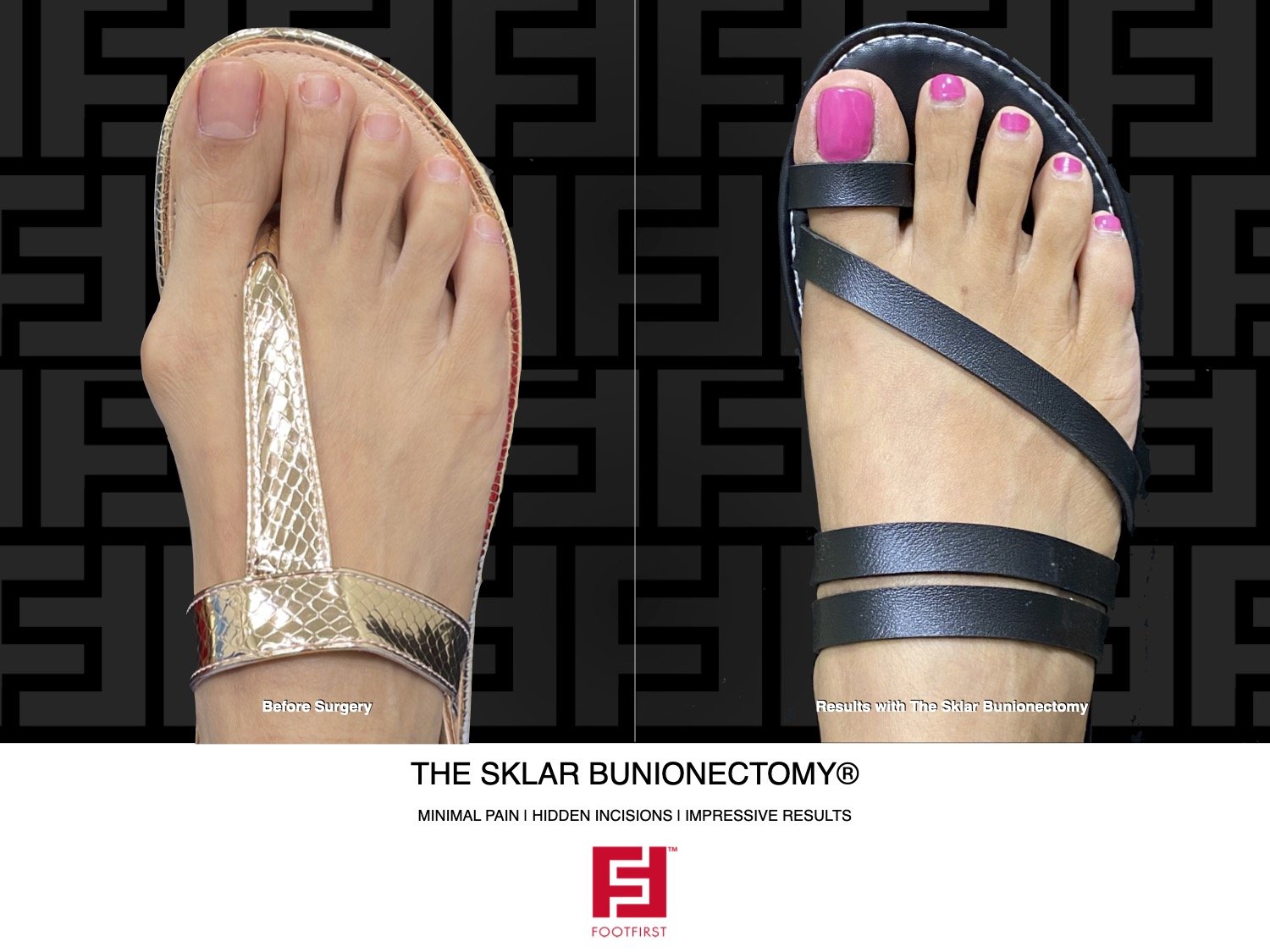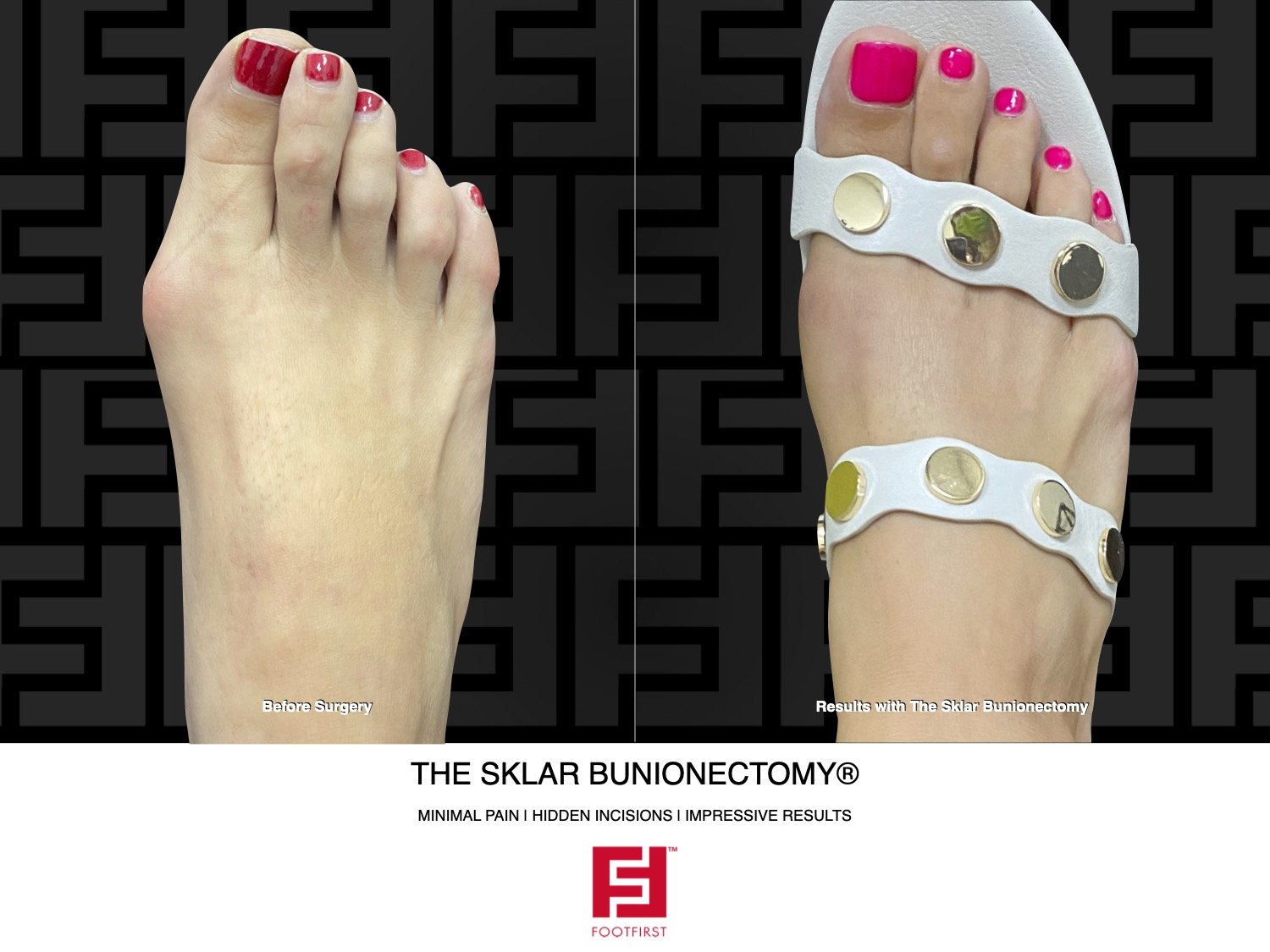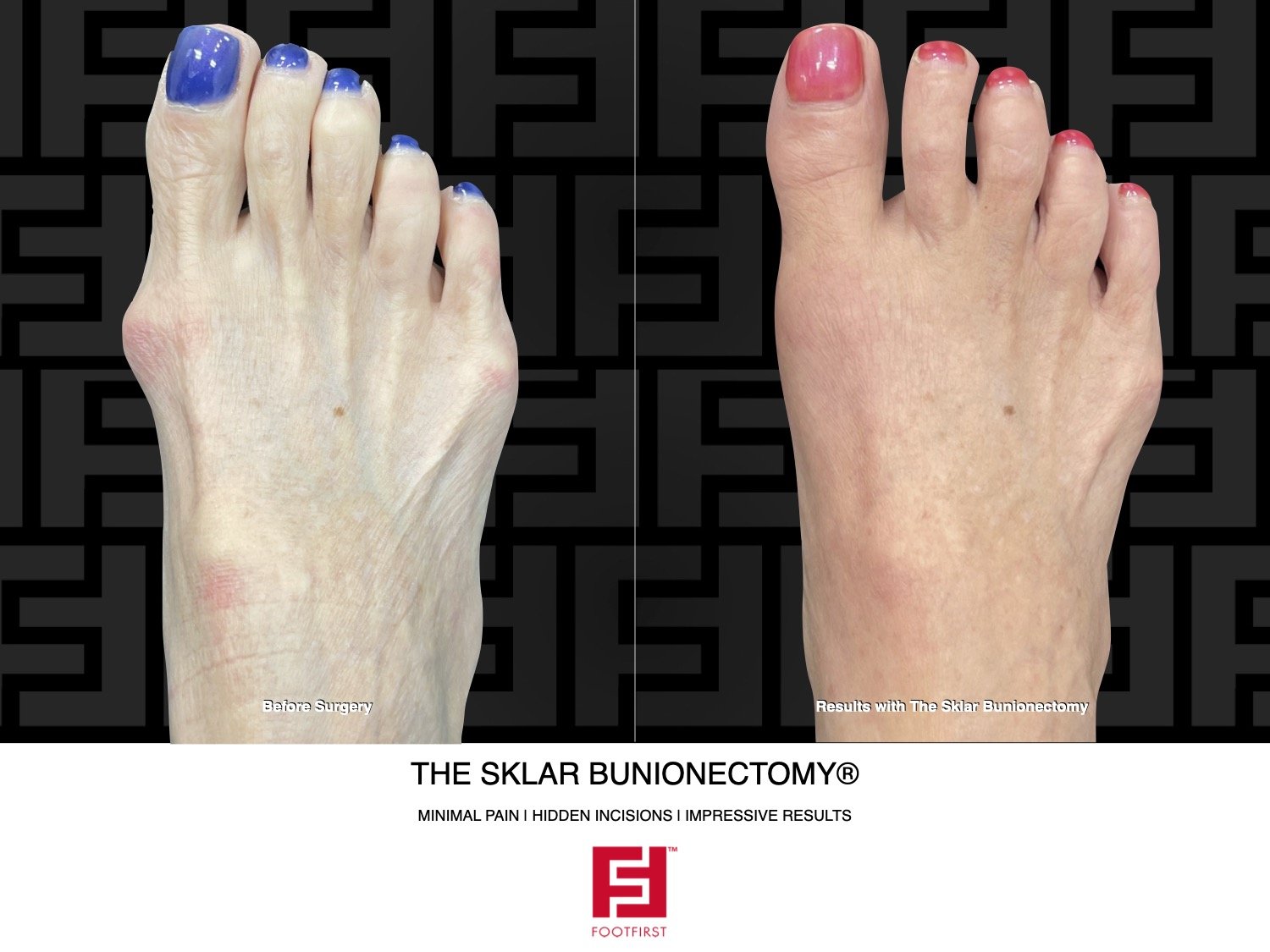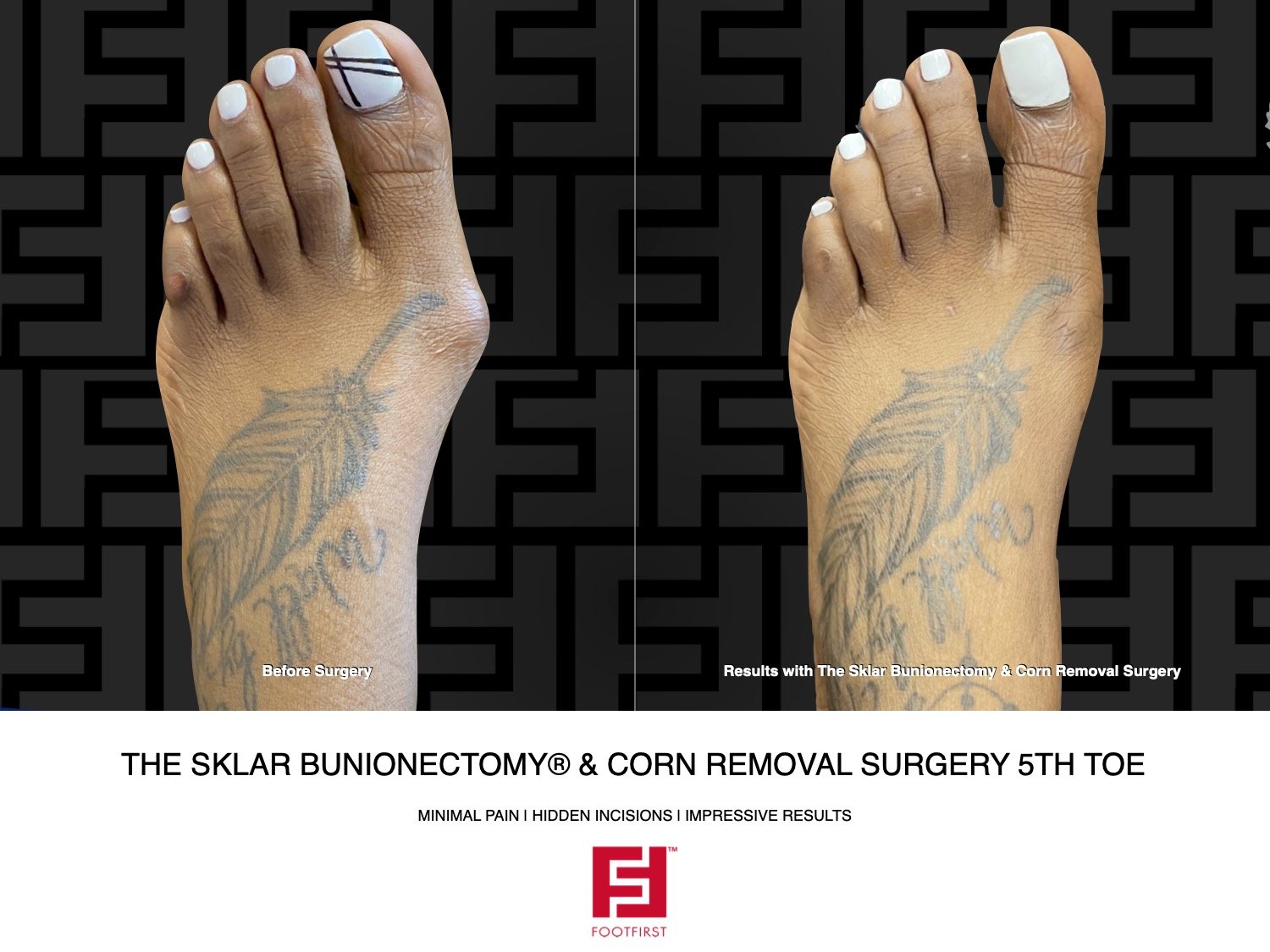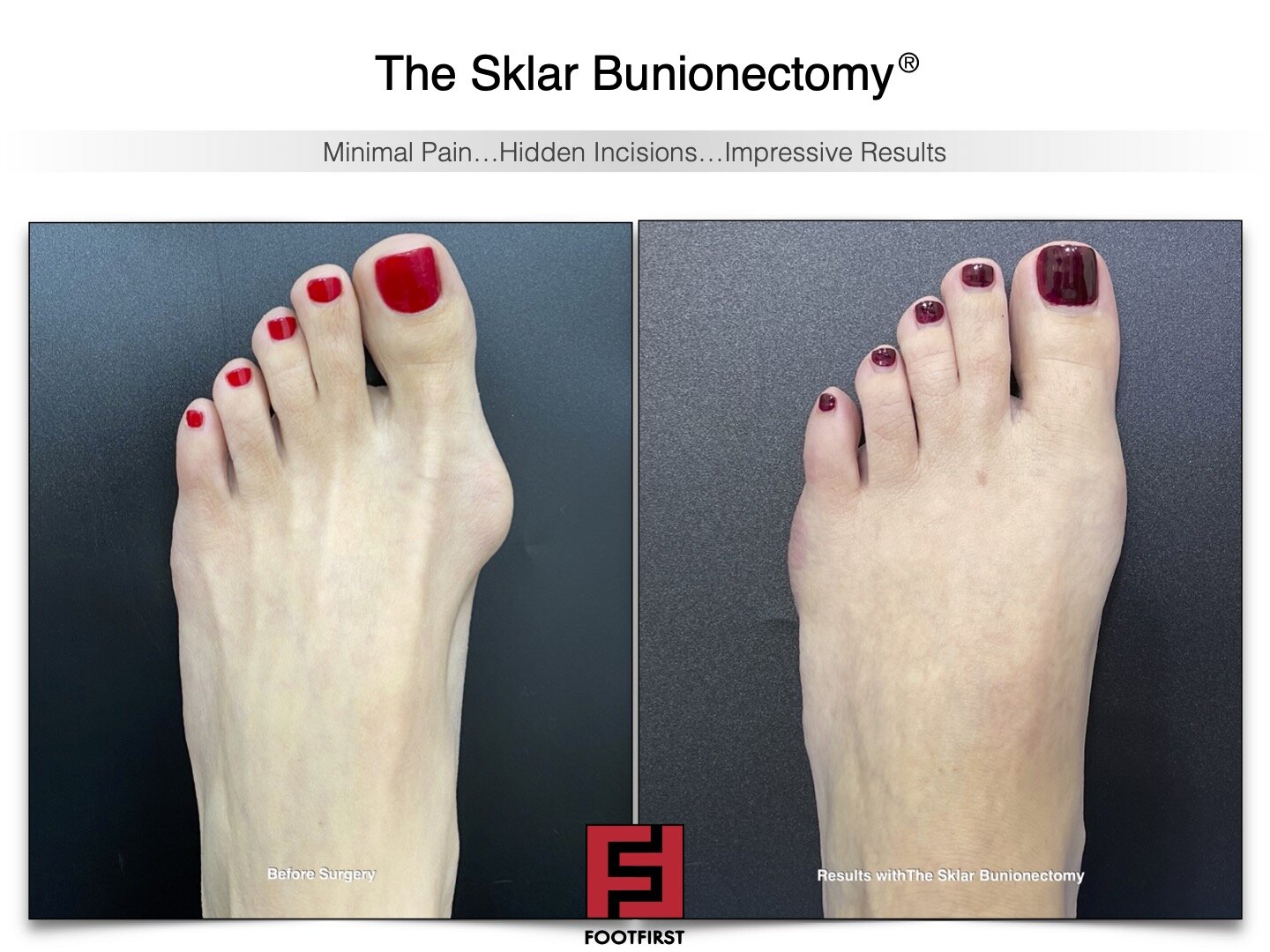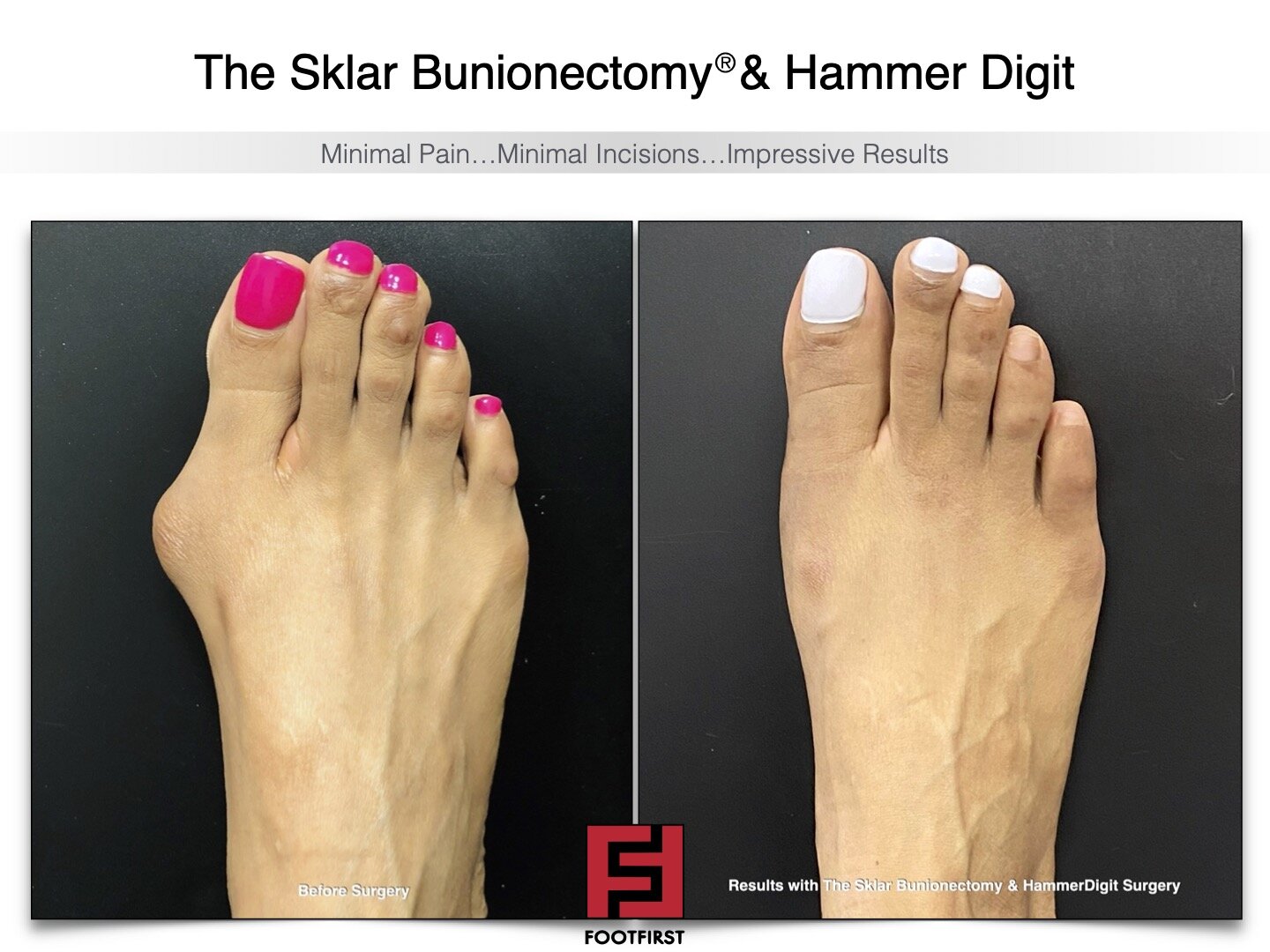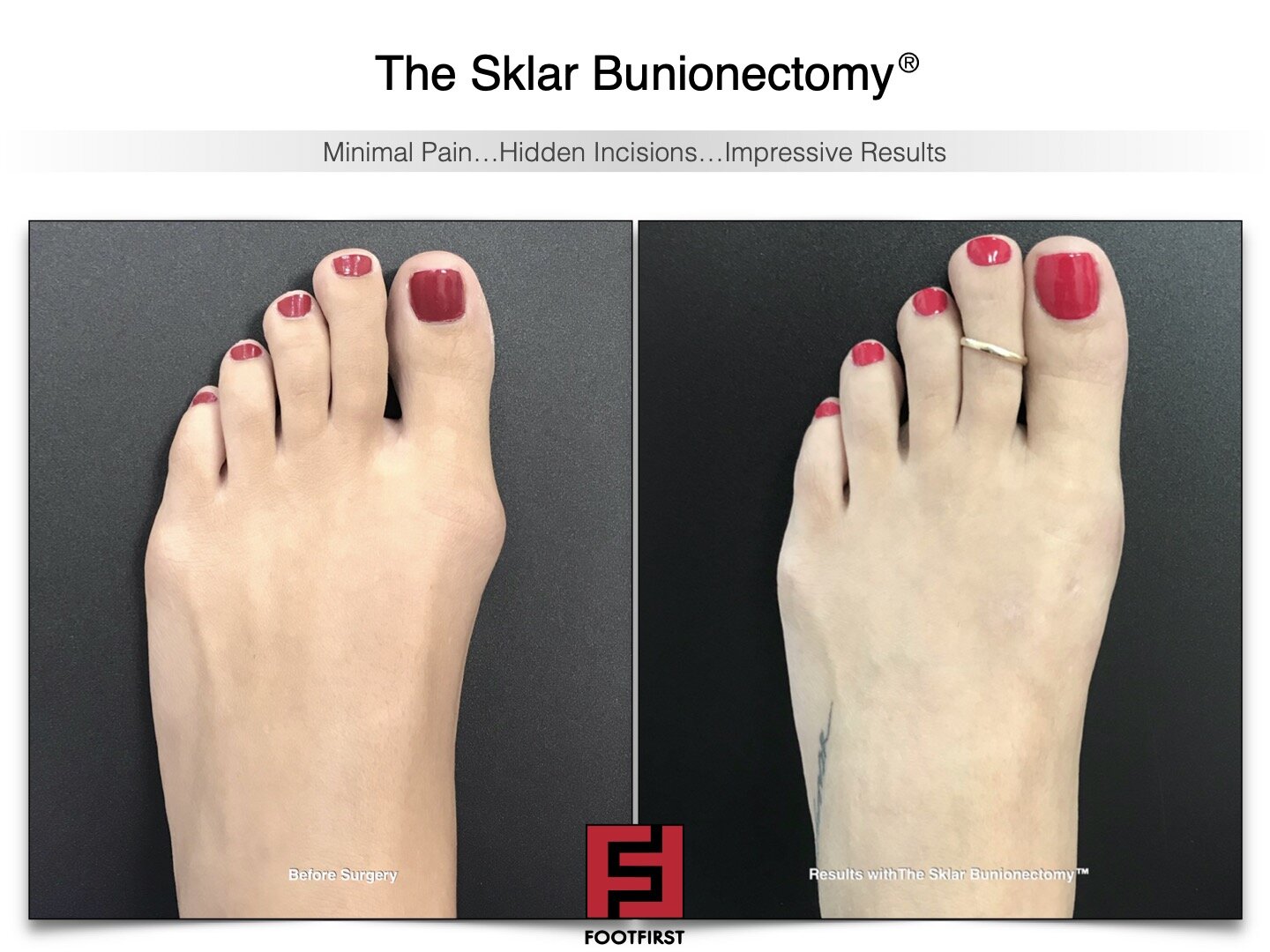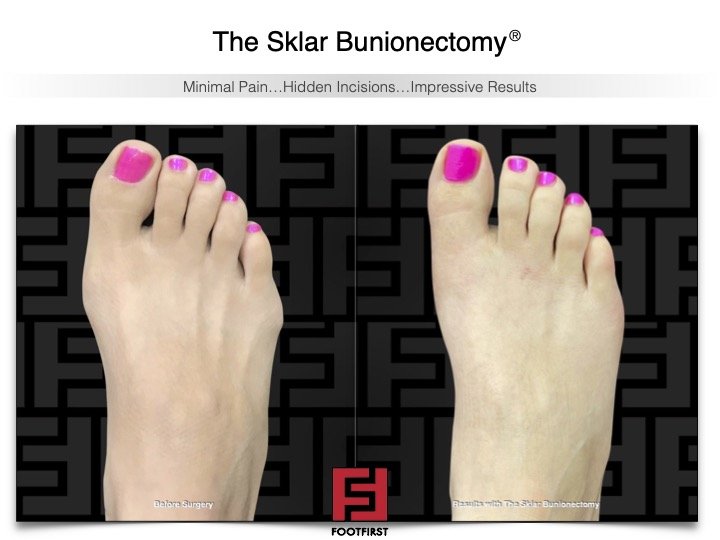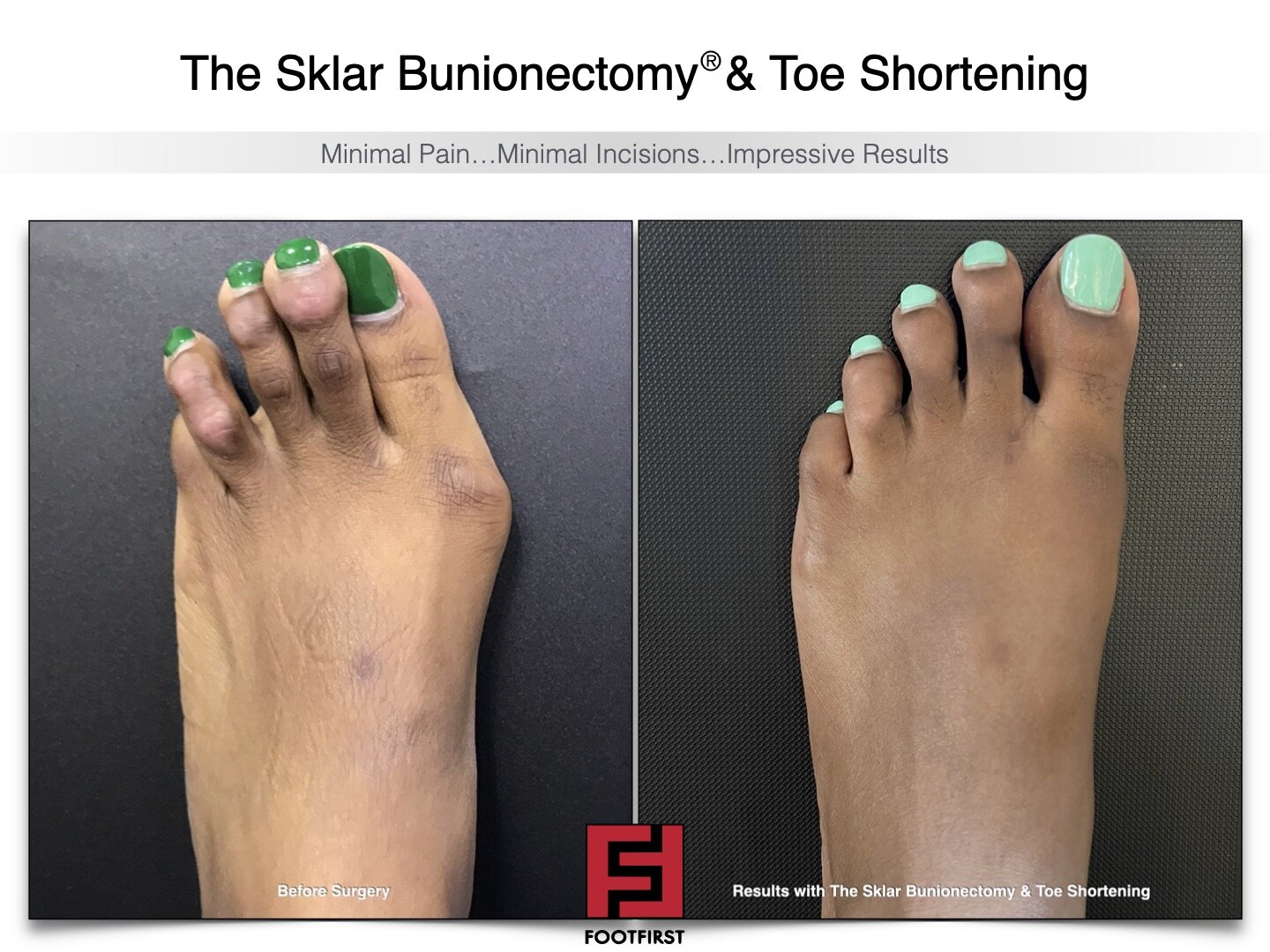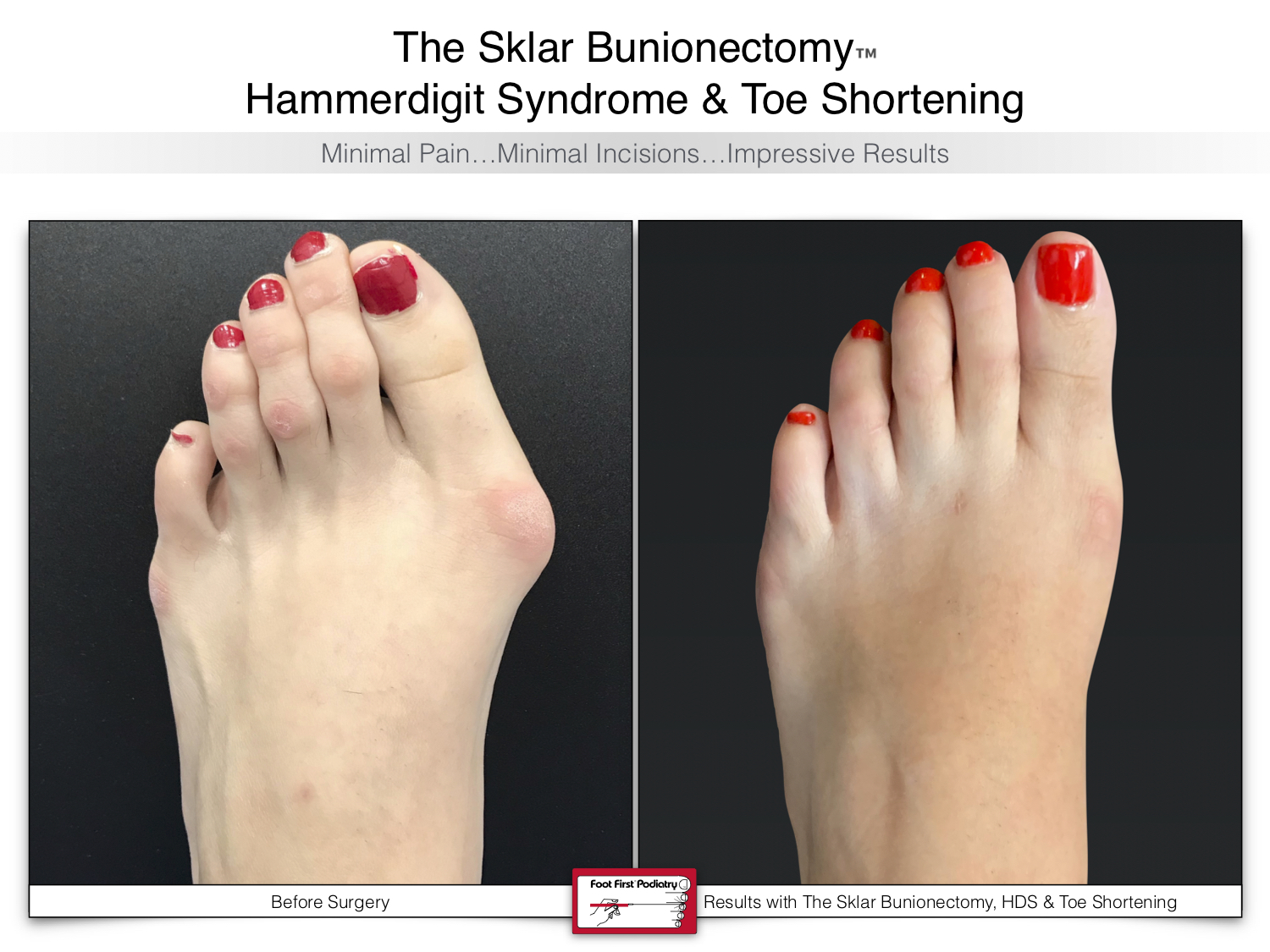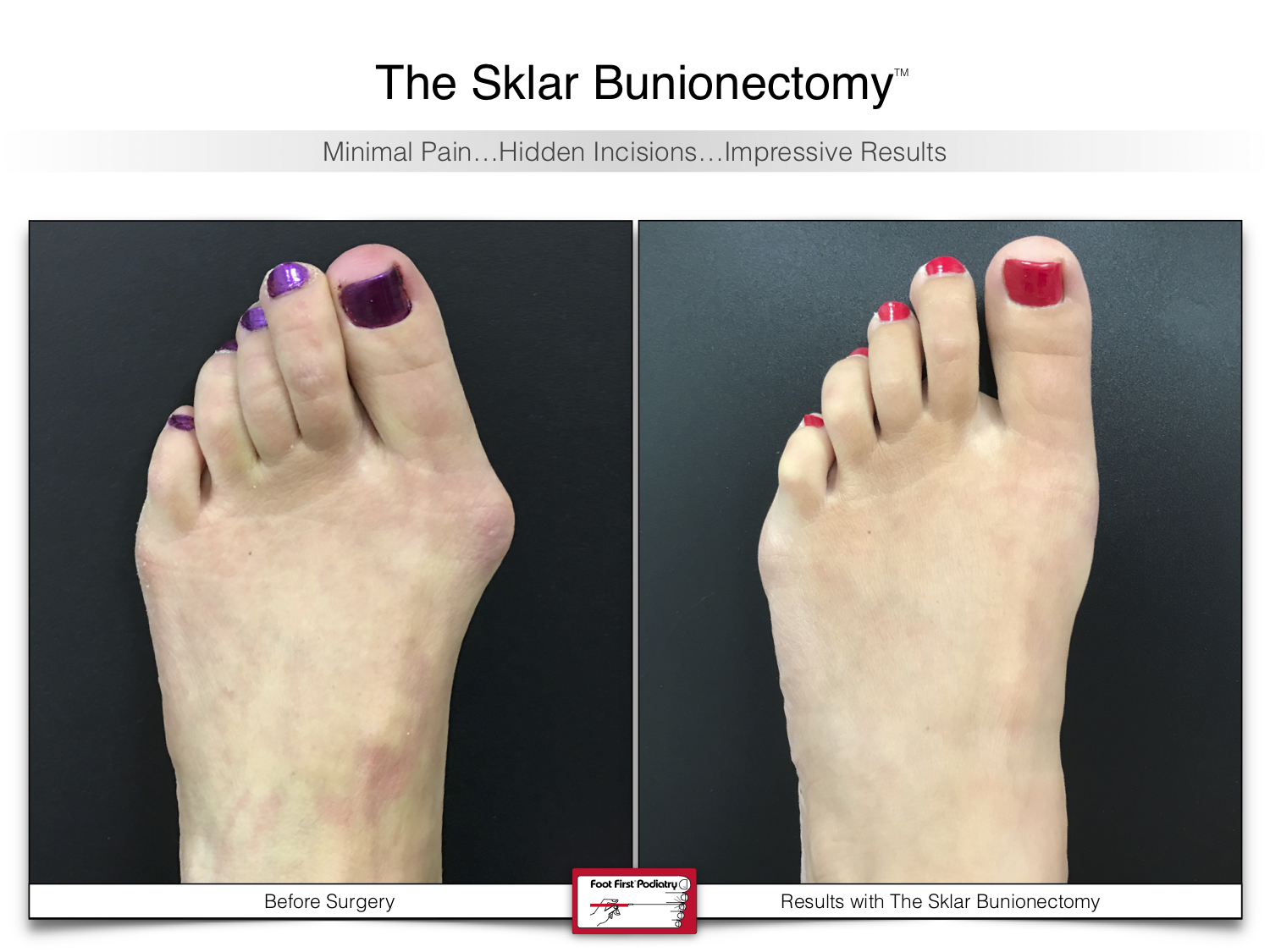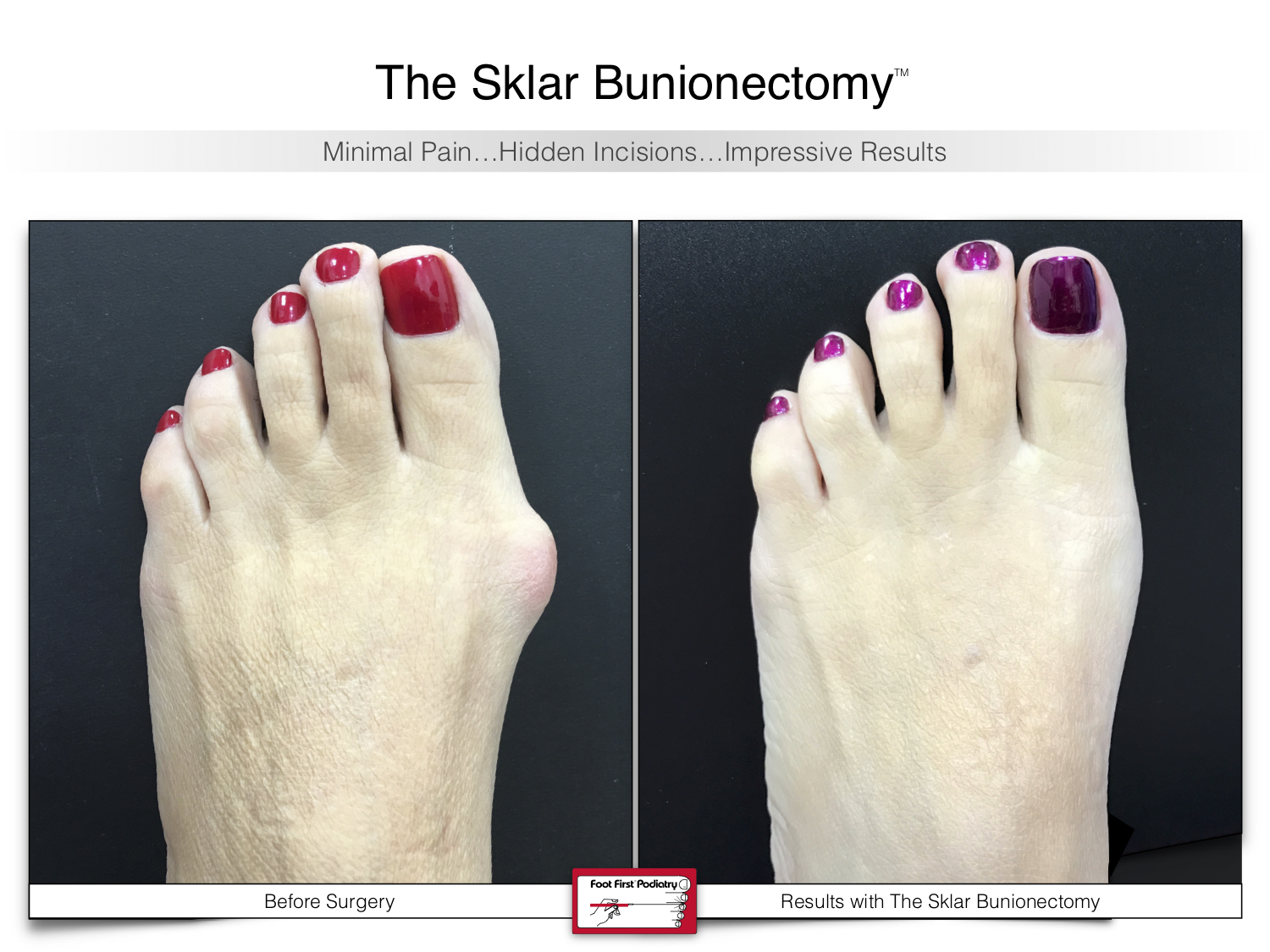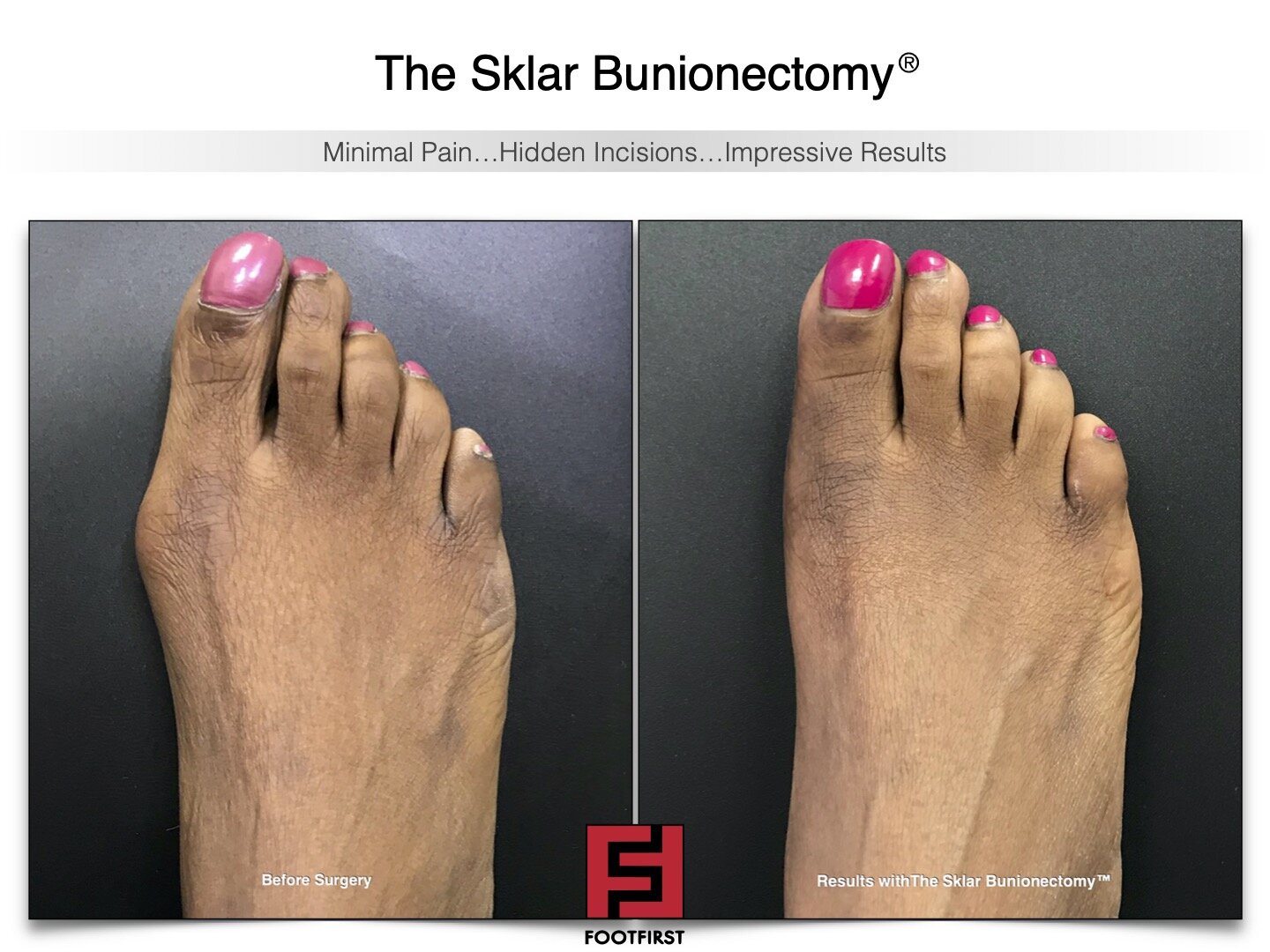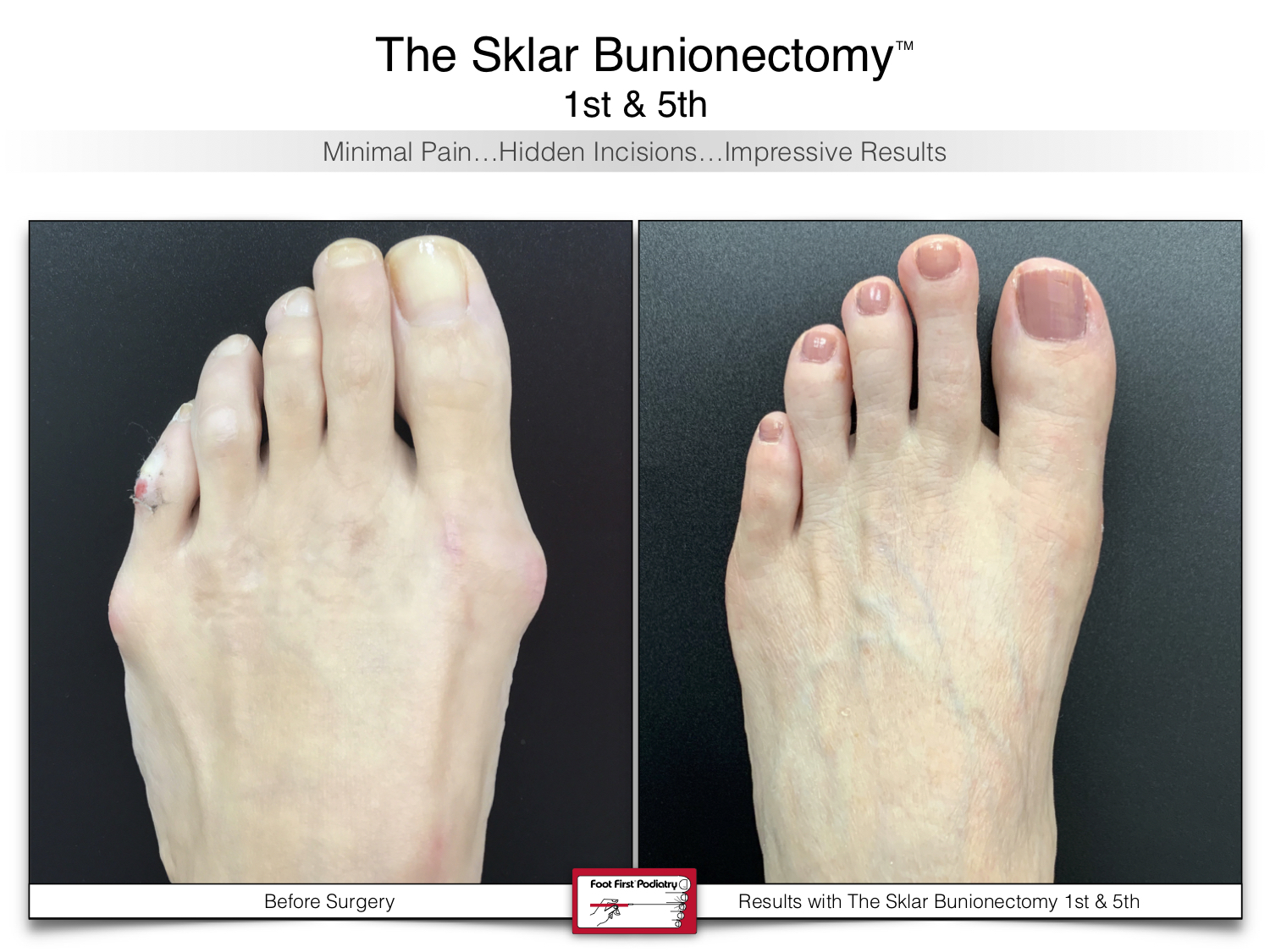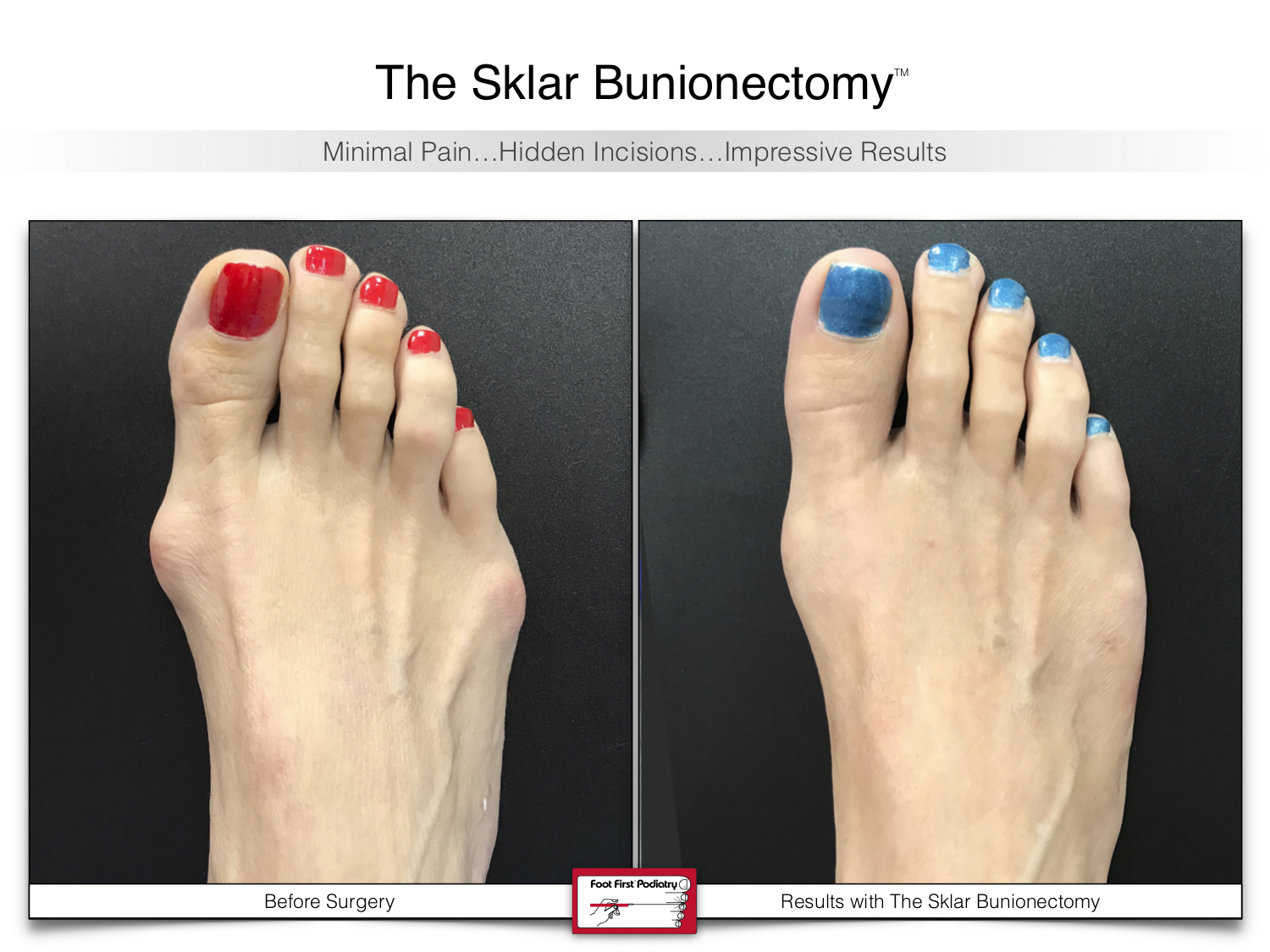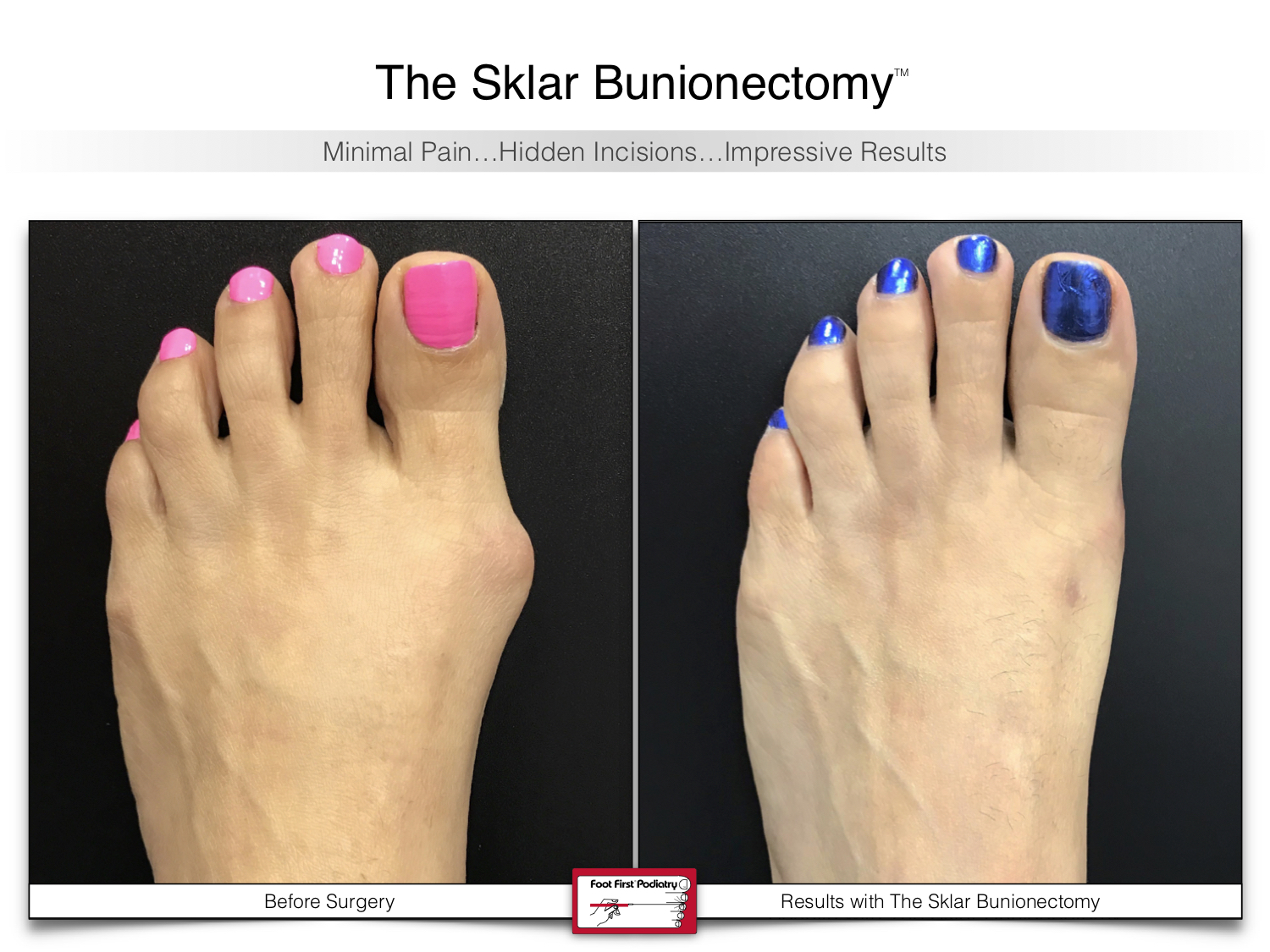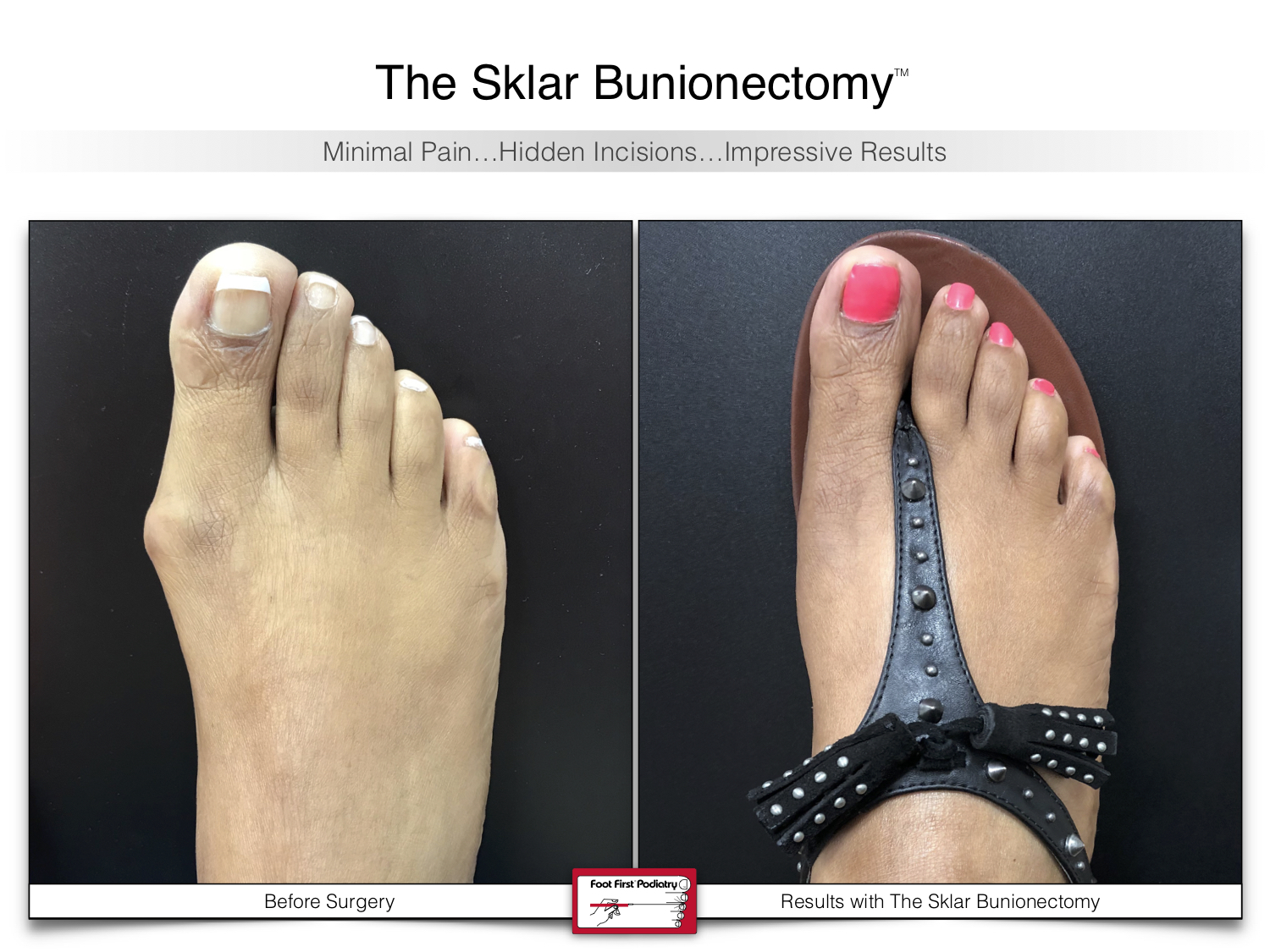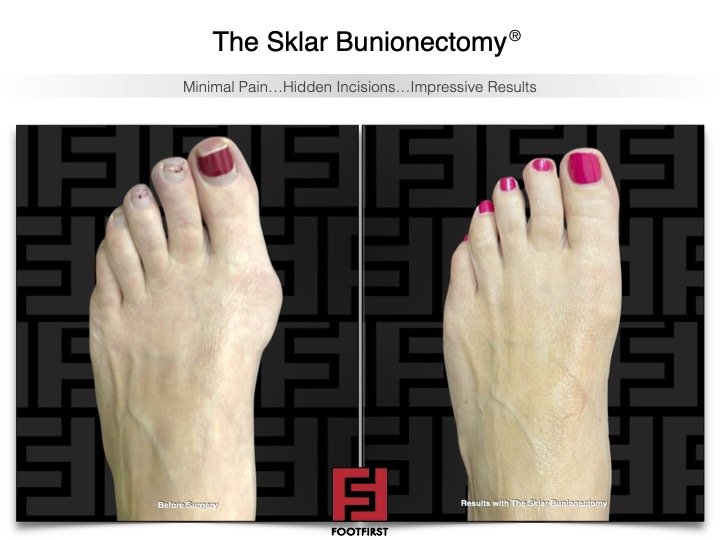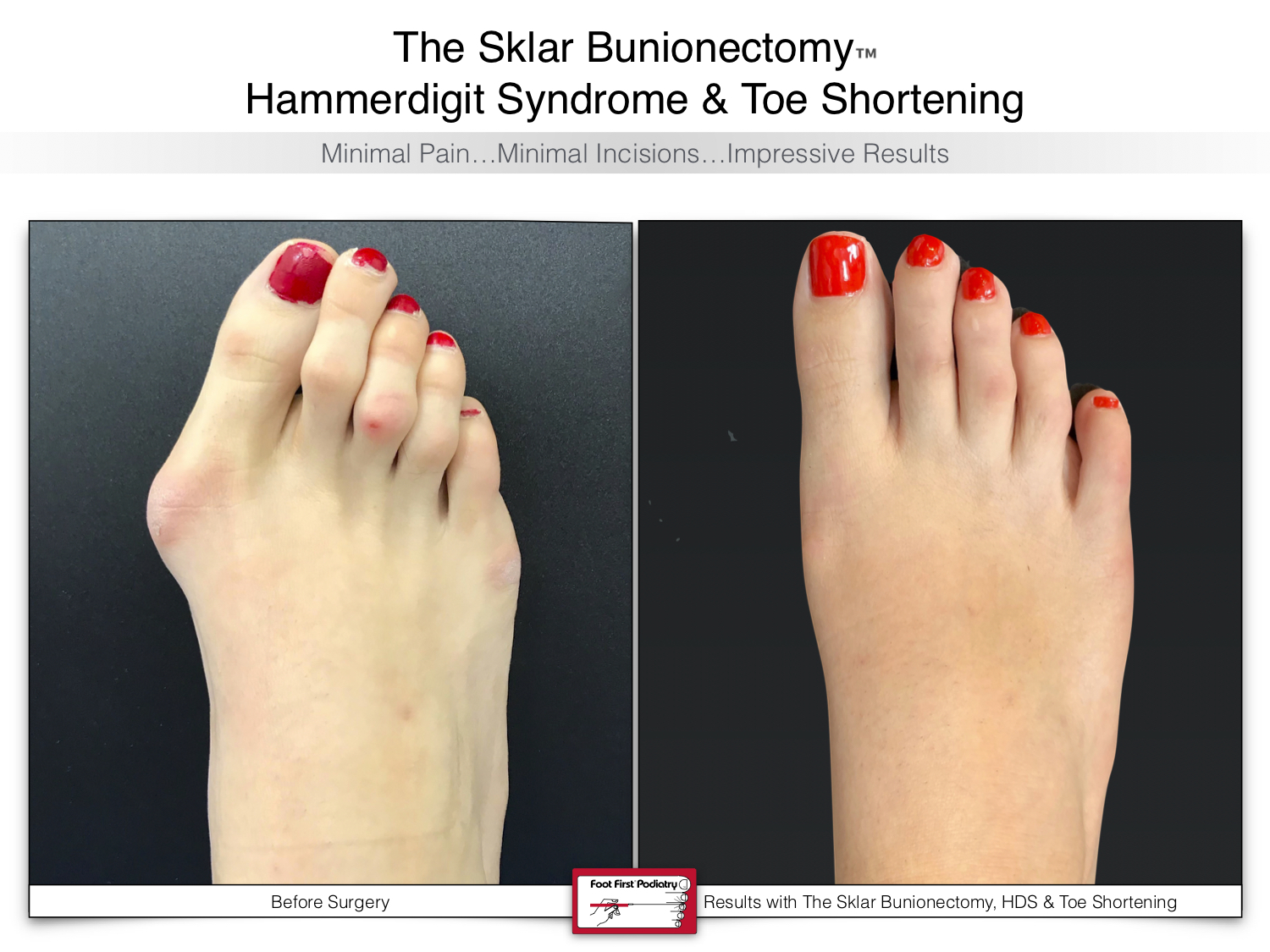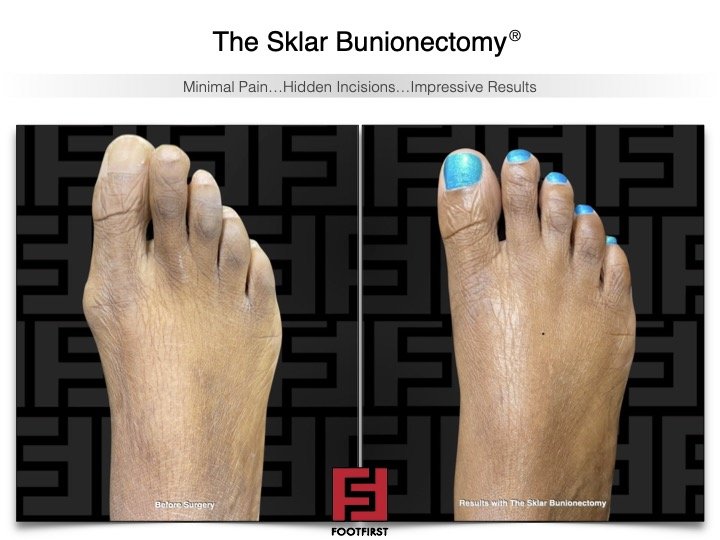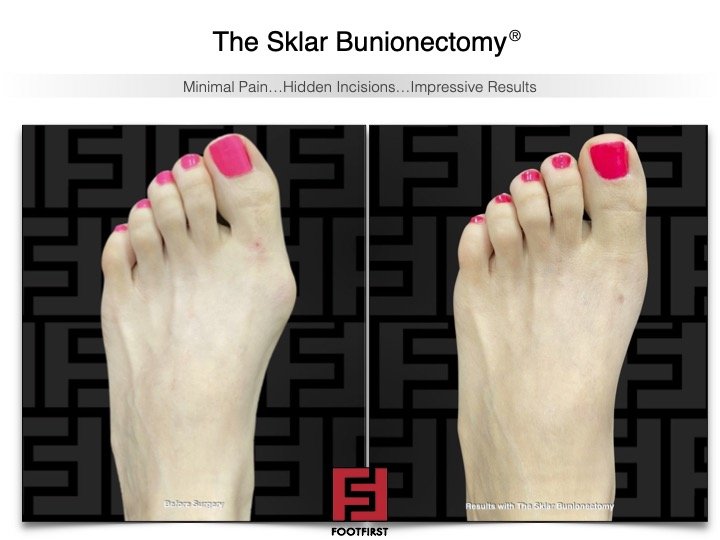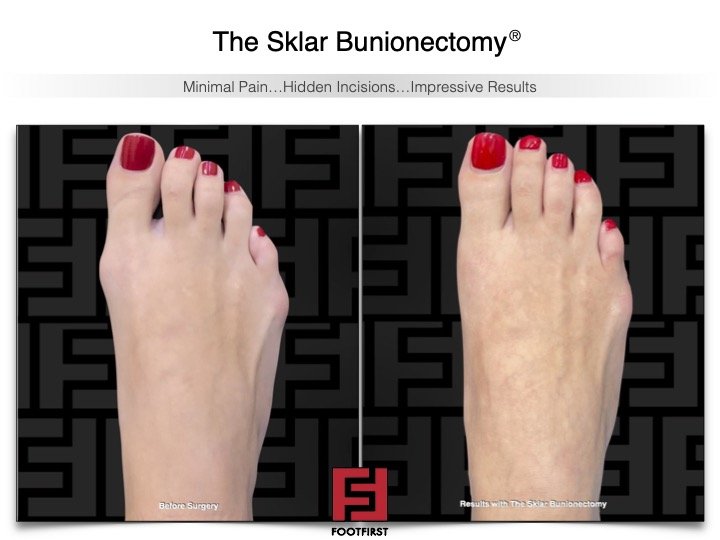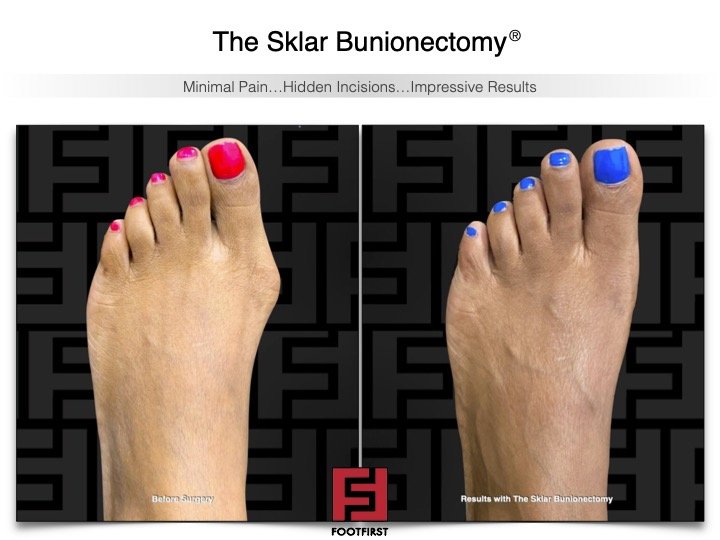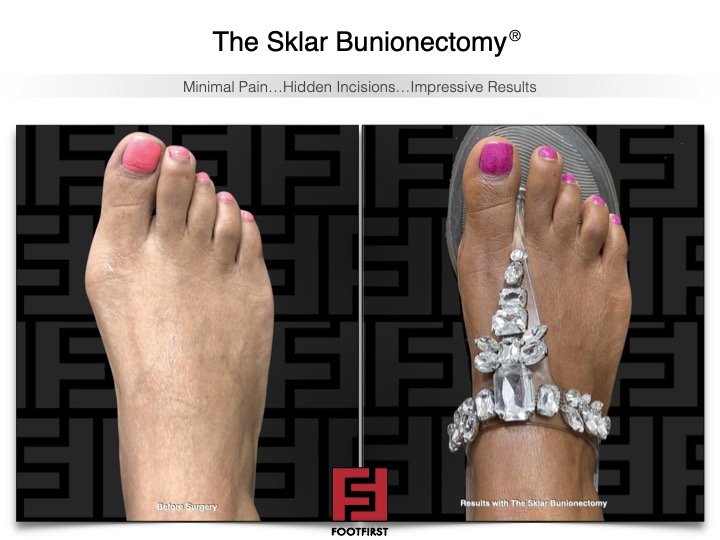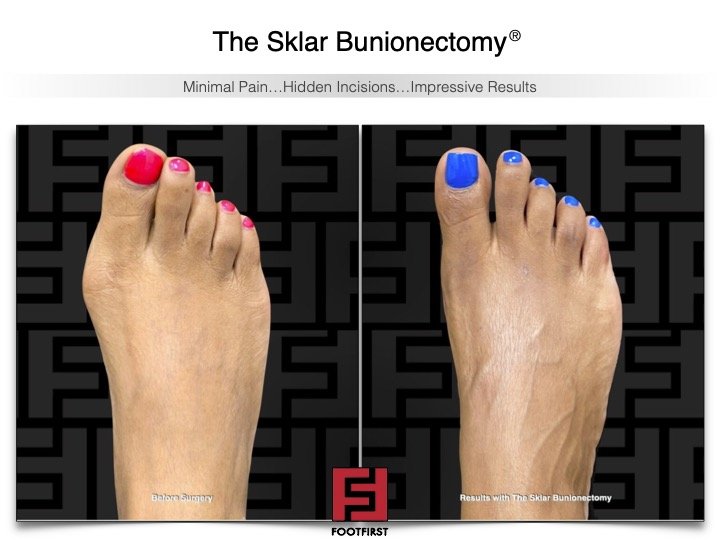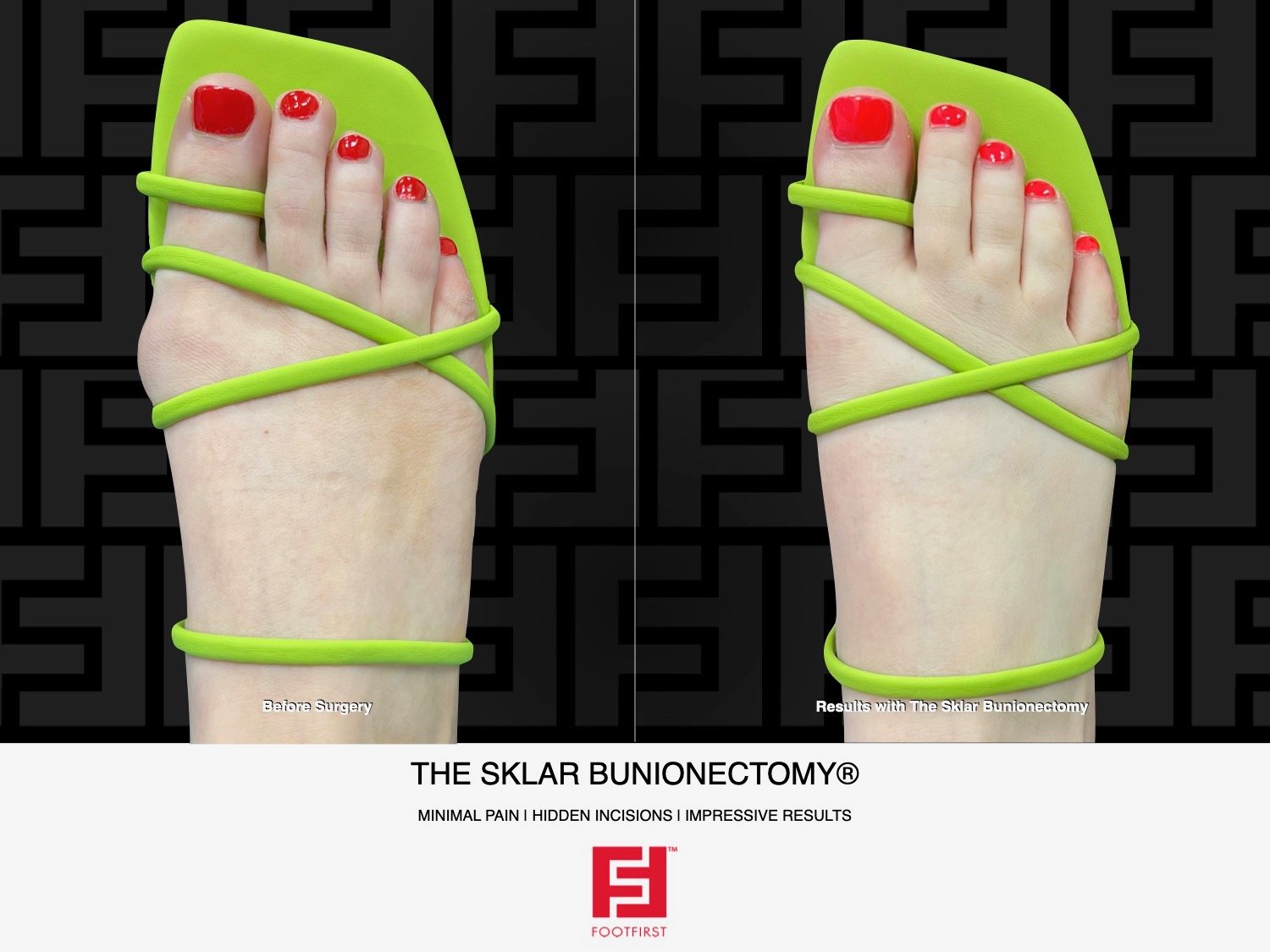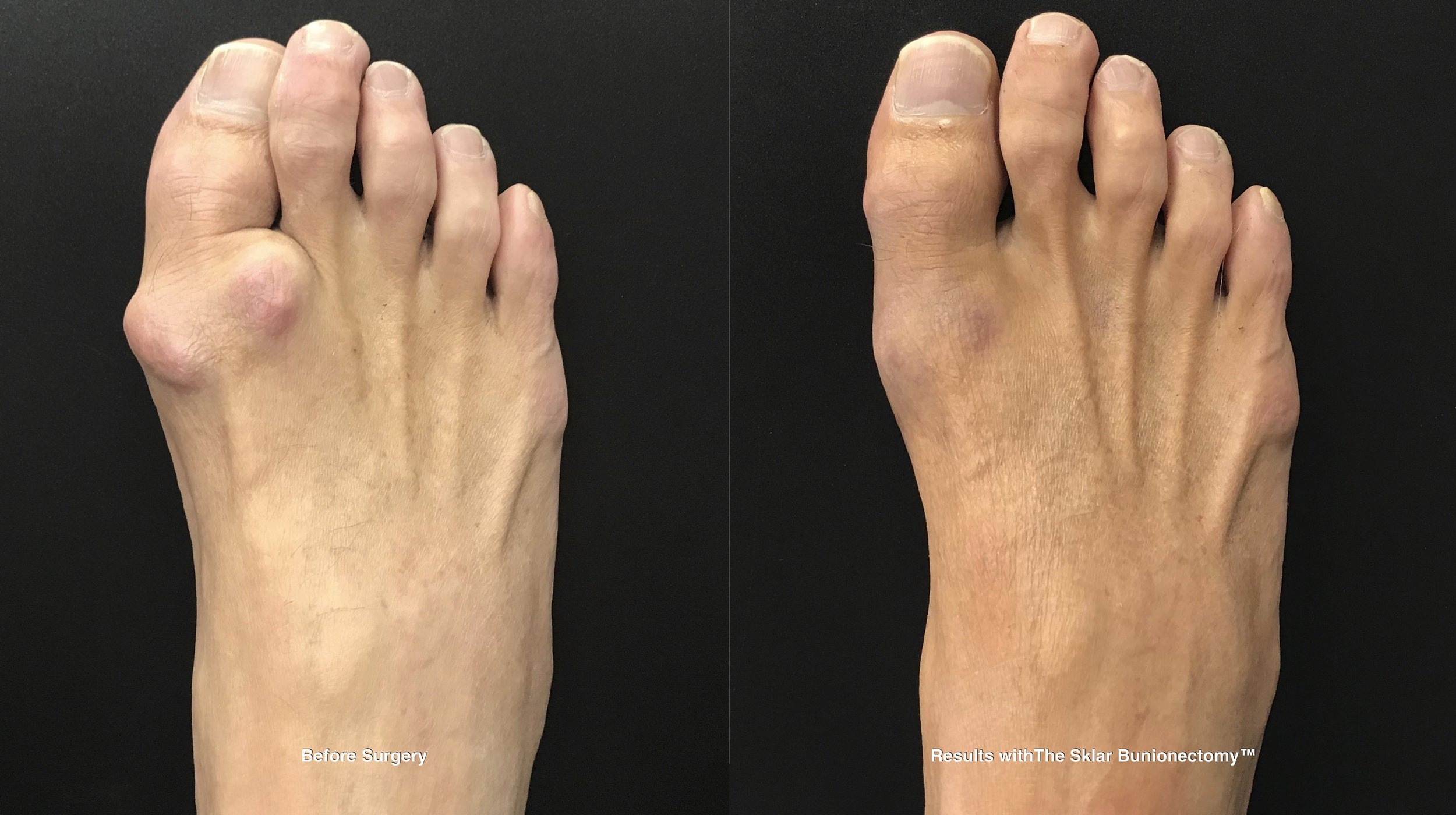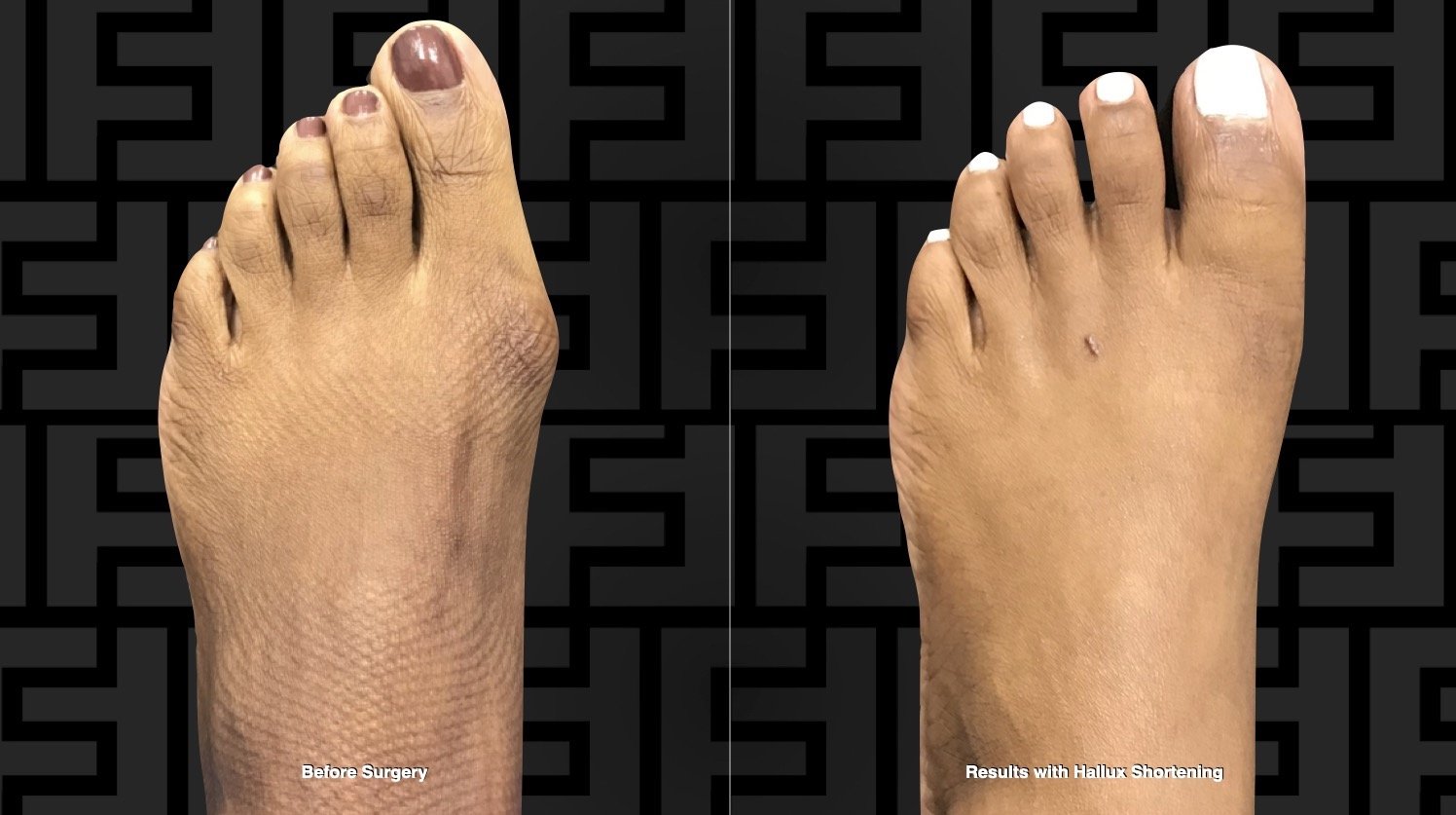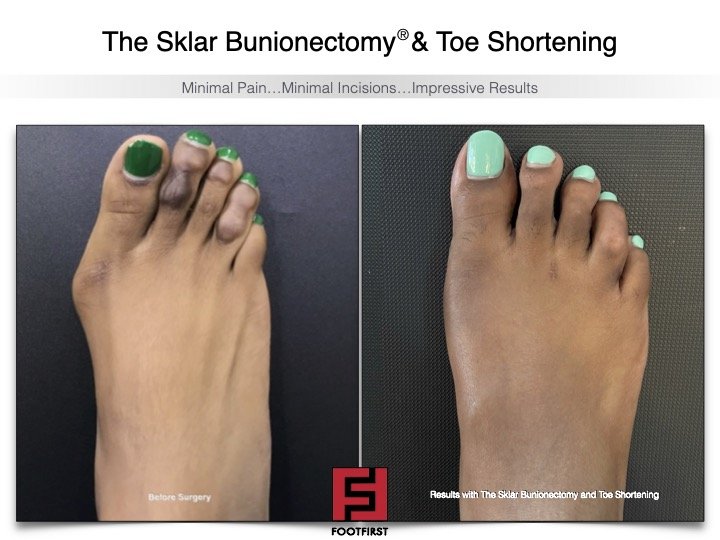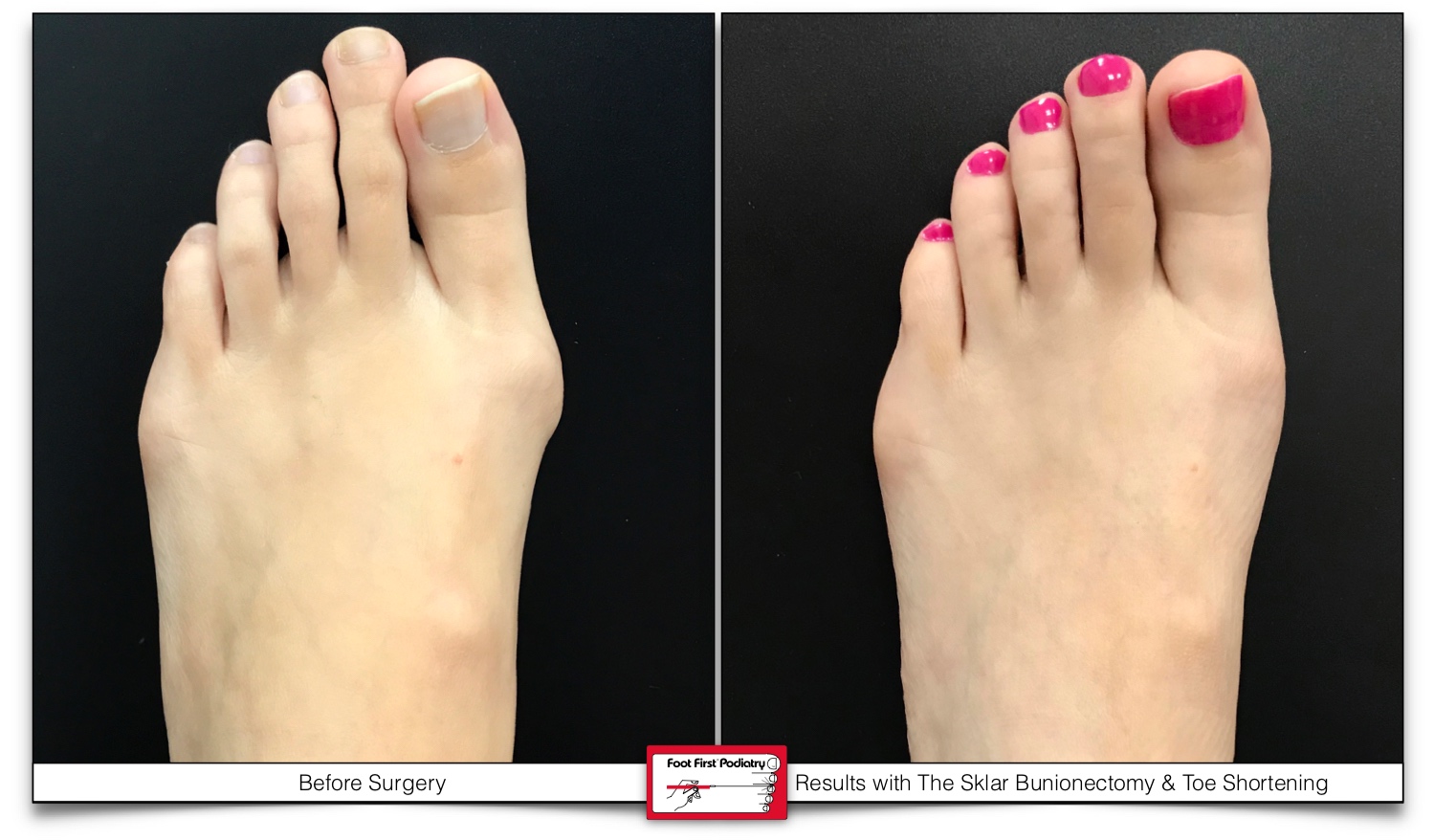HEAR FROM OUR PATIENTS
We love when our patients are proud of their feet
The Principle Behind the Sklar Bunionectomy®
“I was never taught the “perfect” bunionectomy, so I decided to design one.”
– Keith D. Sklar, D.P.M., F.A.C.F.A.S.
Everything has to start somewhere, including bunion surgery. Over thirty years ago I was taught the traditional bunionectomy in podiatry school. It wasn’t perfect, but it gave adequate results. The traditional bunion surgery consisted of castings for six weeks, an ugly and noticeable scar, a high complication rate, and inconsistent results.
STRENGTH
In 1986, just after I started my practice, I was taught the Swiss Compression Technique. This was very exciting because the Swiss Compression Technique added the needed strength to fixate the osteotomy, eliminating the need for casts or crutches. As a result, I could allow and even encourage patients to get up and move around. This not only added convenience to the recovery, but it also reduced the risk for dangerous blood clots.
AESTHETICS
In 1997, we introduced the plantar medial incision. Aesthetically, our incisions are made on the side of your foot so they can’t be seen from the top. This eliminated the ugly and noticeable scar caused by the traditional bunion surgery. Functionally, not only does this hidden incision eliminate postoperative adhesions, this side incision will contract to help maintain the corrected surgical result. We could now fix feet beautifully.
ENGINEERING
In 2010, we added engineering to our bone cuts. After attending a surgical lecture that discussed different engineering concepts, I designed a structurally sound bone cut that was simple to perform, leading to consistent, reproducible results.
With our new designed bone cuts, both the strength and consistency of our bunion surgeries are simply remarkable. These cuts are engineered to withstand immediate weight-bearing. We have more control over the form and functionality of the foot. Post-operatively, our patients are less restricted, enabling them to walk right away – some can even return to work days after the surgery. Not only are our results structurally sound, but they are visually impressive.
With the combination of the strength of the Swiss Compression Technique, the cosmetic result of the plantar medial incision and the engineering of the osteotomy, this is the Sklar Bunionectomy.
The Sklar Bunionectomy®
Redesigned…Reengineered…Remarkable
The Sklar Bunionectomy is unique within the world of Podiatry. As a brand, it has become our guiding trademark and it embodies all that characterizes our work at Foot First Podiatry. We are committed to the tradition of the bunionectomy but we have taken it one step further with our innovative surgical techniques. The Sklar Bunionectomy is minimally invasive and is engineered to allow for immediate weight bearing, so our patients walk right away. It requires no crutches or casts. Aesthetically – AS YOU CAN SEE – rewarding our patients a beautiful, virtually scar free foot.
Bunions
With the Foot First way, you'll experience minimal pain, a quicker recovery, and results you want to see.
What is a bunion?
A bunion is a bump that forms on the side of the foot near the big toe or the little toe at the metatarsal phalangeal joint. Due to the position of the bump, a bending of the big toe occurs, which may lead to crossing of the toes, or worse, a painful arthritis will form.
How do bunions form?
Bunions typically become noticeable and painful in early adulthood between the ages of twenty and forty, and become more pronounced with age and activity. Usually bunions are caused by a genetic muscular imbalance and not by wearing improper shoes; however, improper shoes will make the bunion hurt. In third world countries, where shoes are not worn, bunions are still frequently seen reinforcing that shoes do not cause bunions. In most cases bunions are hereditary, and may occur with other foot problems. If your parents or grandparents had problems with bunions, you may likely get them as well.
The longer you leave a bunion untreated, the more harm it will cause. Arthritis may form in the joint and a deformation of the foot may follow, causing pain.
Symptoms
Patients with bunions might notice redness, swelling, pain and an angular protrusion at the side of the foot by the big toe. Crossing of the first and second toes may occur. Patients may also experience cramping and overall fatigue in the arch of the foot.
Diagnostic Tests
Most likely, X-rays of your feet and a physical exam are the only tests required.
BUNION TREATMENT
The goal of treatment is to reduce your foot pain, by controlling inflammation, and any muscular imbalance in the area and prevent its recurrence or progression of the bunion.
Non-Surgical Approach
If your bunion is not painful or you catch it early in its development, a non-surgical or conservative treatment plan may be effective. This usually includes good supportive shoes with the addition of an orthotic – a custom made arch support worn in your shoes. The orthotic will provide support to the structures of the foot (bones, muscles, and ligaments) and will balance your feet while walking. By supporting the muscular imbalance of the foot, we may be able to slow the progression of the bunion deformity. Occasionally, an anti-inflammatory cortisone injection into the area may relieve some of the discomfort. However, these measures are not a permanent cure.
Surgical Approach
Foot First Podiatry has a state-of-the-art surgical facility on site. There is no hospital stay required and most procedures can be completed within one to two hours. We also provide complete anesthesia services including the use of “twilight” sedation. This is done through an I.V. and allows the patient to be not only pain-free, but also the patient will not recall the surgical experience itself. Patients do not require the use of crutches, and there are no bulky casts.
Generally, no scarring or stitches are visible at the incision site. At Foot First, we not only care about the health of our patients, but also the cosmetic outcome of our surgery as well. Our doctors utilize plastic surgical techniques for closing the surgical site.
The procedure involves realigning the bones in the foot. This may be accomplished by breaking or cutting the affected bones and realigning the big toe joint. We may also need to release, transfer, or lengthen tendons and ligaments to correct any muscle imbalances. Surgical correction is the most effective method of treatment to correct the bunion, and is usually a permanent correction.
Limited walking is permitted the next day following surgery, generally in a surgical shoe that may be worn from one to three weeks after surgery.
Contact
Request a consultation appointment below and we will contact you for scheduling
Or give us a call at (847) 352-9221.

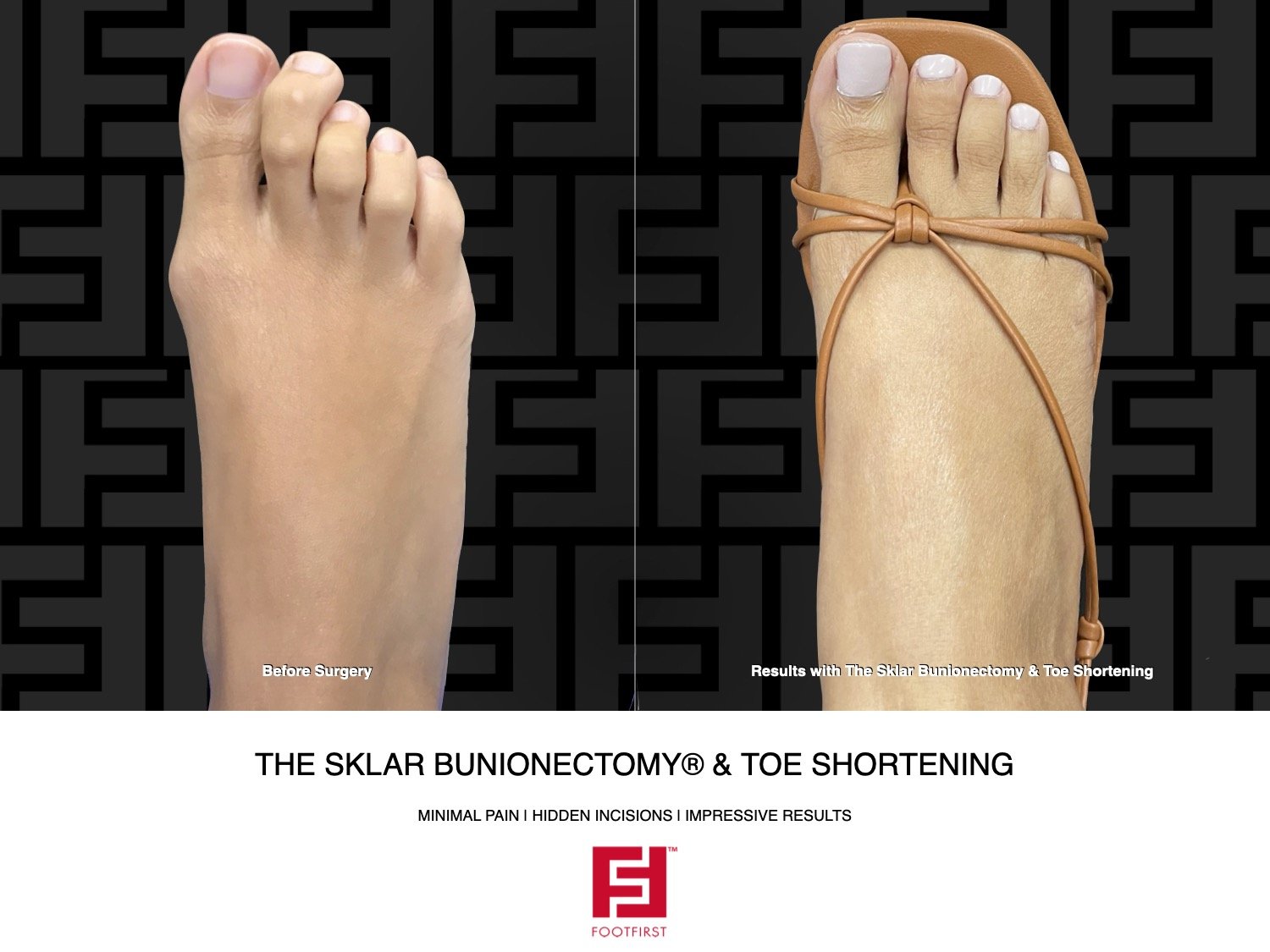





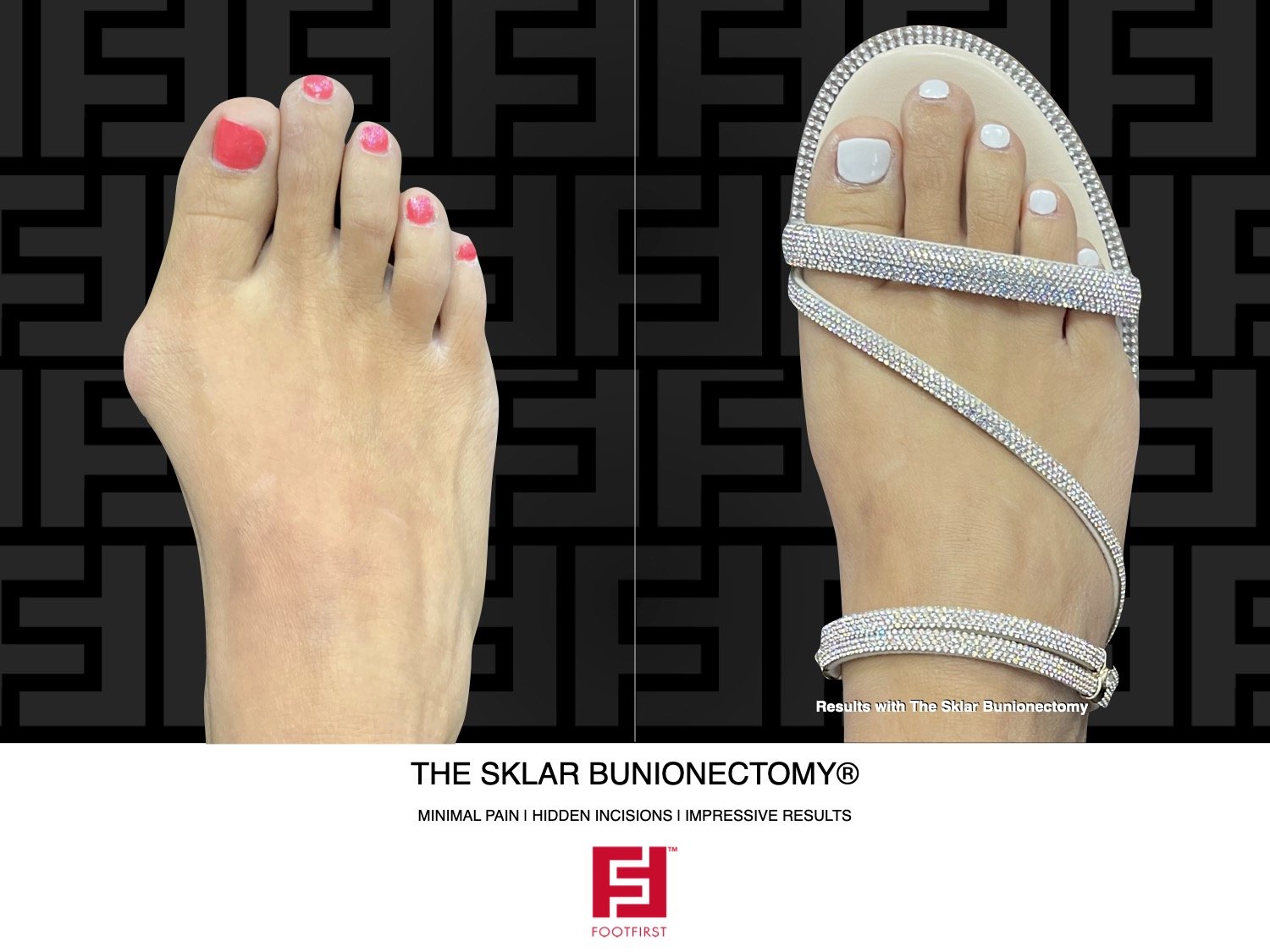
![FF www.footfirst.com - The Sklar Bunionectomy & Toe Shortening 12.2023 86[11].jpeg](https://images.squarespace-cdn.com/content/v1/56705f77a128e6d8f677140e/1703735965599-H56B2OL1LFNK0OPY91PC/FF++www.footfirst.com+-+The+Sklar+Bunionectomy+%26+Toe+Shortening+12.2023++86%5B11%5D.jpeg)

